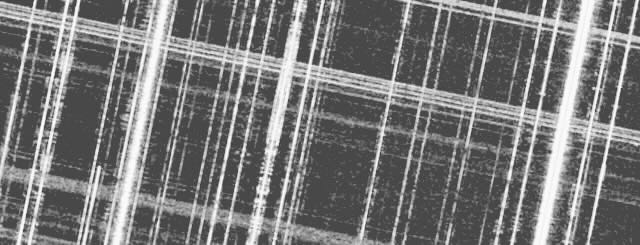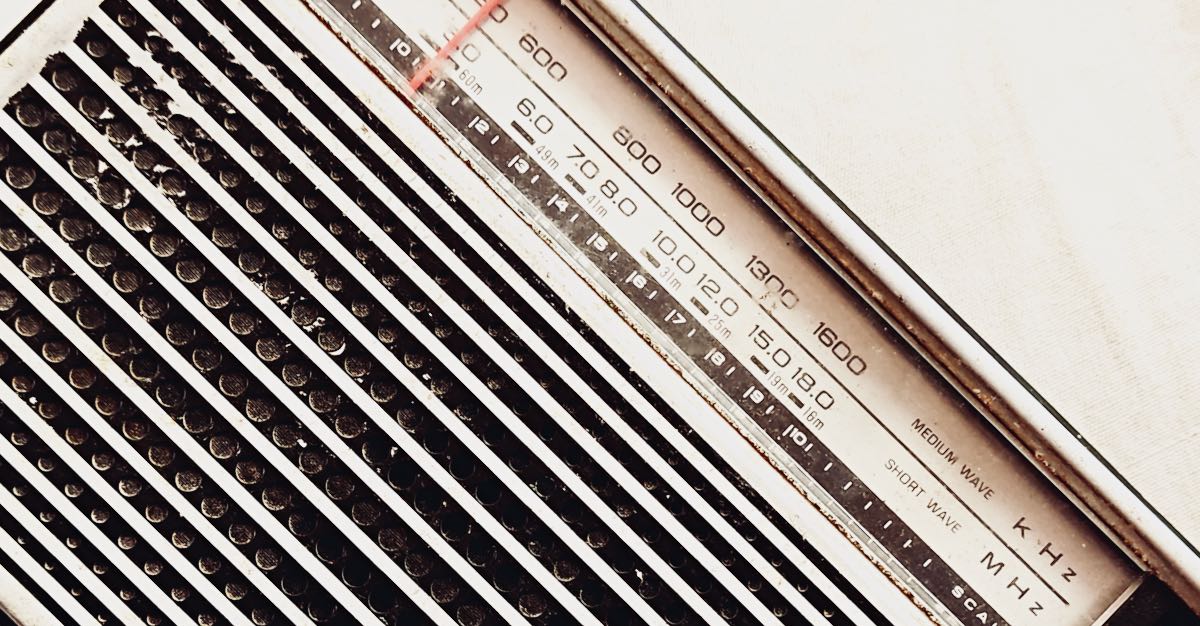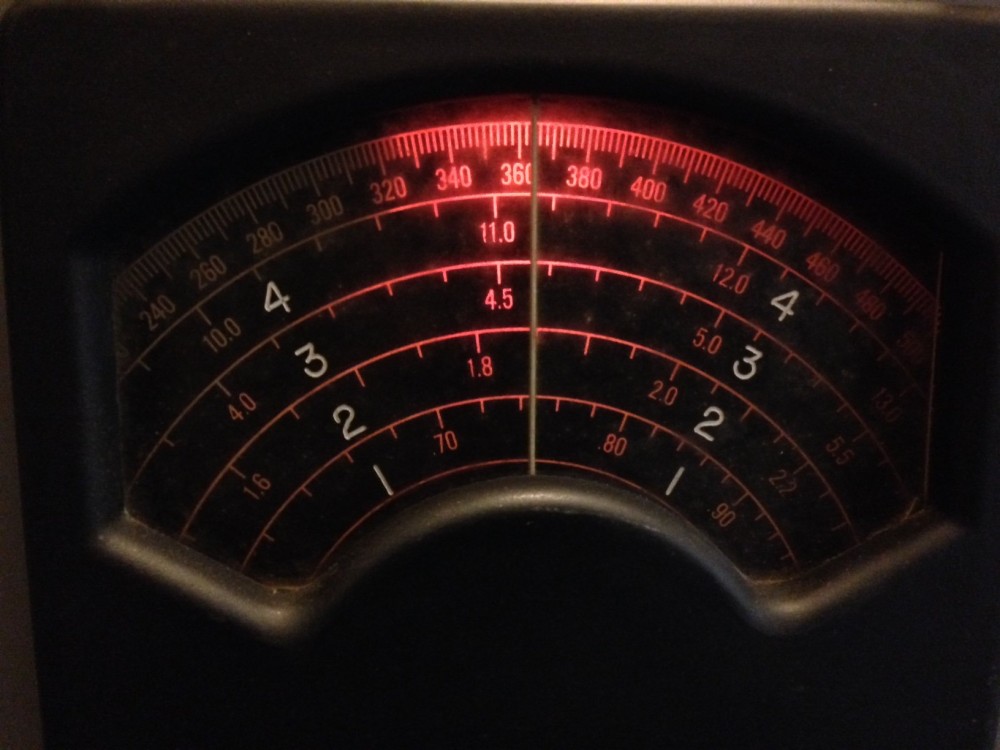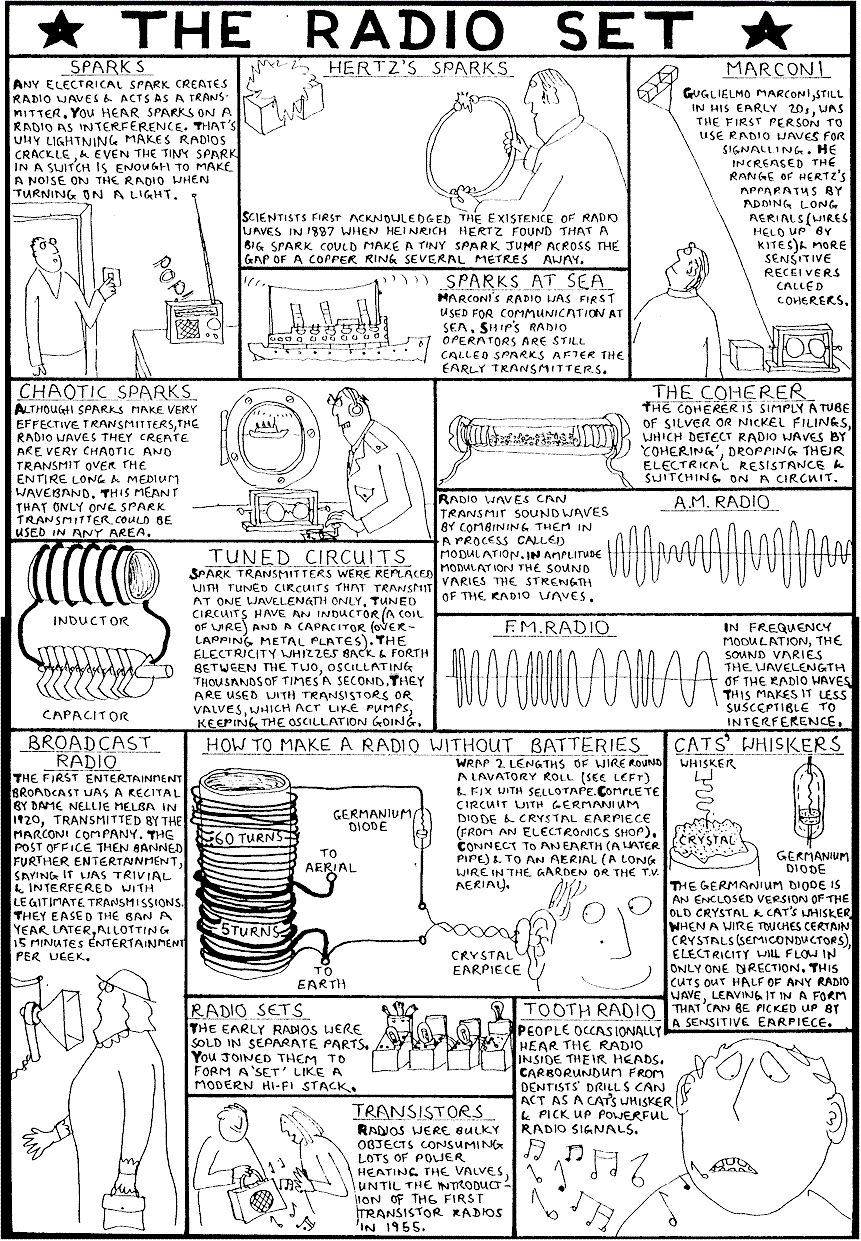Many thanks to SWLing Post contributor Dennis Dura, who shares news via Radio World that the AM Radio for Every Vehicle Act (H.R. 979) has cleared the House Energy and Commerce Committee with overwhelming bipartisan support (50-1). If passed, the bill would require automakers to include free, easily accessible AM radio receivers in all new vehicles, including EVs, for at least the next eight years. Lawmakers emphasized the ongoing importance of AM radio for emergency alerts, public safety, and reliable communication. You can read the full article here: House Committee Advances AM Radio Bill – Radio World.
Tag Archives: AM in Cars
Radio Waves: Pirating Putin, Refuge Hosted Radio in South Sudan, Drivers Still Love Radio, and TIS Request
Radio Waves: Stories Making Waves in the World of Radio
Welcome to the SWLing Post’s Radio Waves, a collection of links to interesting stories making waves in the world of radio. Enjoy!
Many thanks to a number of SWLing Post contributors including John, Andrea, and Dennis Dura for the following tips:
The pirate-radio DJ who took on Putin (The Economist)
Tens of thousands of ordinary Russians are joining the resistance
n a bedsit in Vologda, a Russian city 500 miles north of Moscow, a man sat at a desk surrounded by recording equipment. In his early 60s, tall and thin with long grey hair, glasses and a moustache, he looked like an ageing rock star making a new album. His name was Vladimir Rumyantsev. He lived alone, and his day job was as a stoker, tending a furnace in a factory boiler-room. In the evenings he was the dj of his own pirate-radio station, broadcasting anti-war diatribes against Putin’s “special military operation” in Ukraine.
Rumyantsev set up the station before the war as a hobby. Radio Vovan (a play on a nickname for Vladimir) mainly broadcast music from the Soviet era that he found in online archives. He said he needed a break from oppressive state propaganda. “Some kind of ‘patriotic’ hysteria started on the airwaves, and as the sole occupant of the flat I voted unanimously to ban the broadcasting of federal tv and radio channels in my home. Well, I had to create something of my own to replace it,” he wrote to me. [Continue reading. Note that this article may be behind a paywall from your location…]
In South Sudan, Refugees Train as Radio Hosts to Keep Residents Informed (VOA News)
JOHANNESBURG, SOUTH AFRICA —
Jabrallah Tia was a teacher in Sudan in 2011 when a brutal war forced him to flee to a refugee camp in newly established South Sudan. Thirteen years later, Tia is still in a camp but with a new career: journalist.
The Ajuong Thok camp in the Ruweng Administrative Area is home to almost 40,000 refugees and displaced people, most from Sudan. Another influx is expected soon, after a fresh conflict broke out in April.
“It’s terrible now when Sudan has started another war. … We’re expecting more people to come from Sudan, as they’re fleeing the war there,” Tia told VOA in a video interview over Zoom.
He knows what that’s like. Tia had to leave everything behind when he fled his home in South Kordofan state. But he said he has found new meaning in his journalism work. Continue reading
Radio Waves: My Father’s Radio, AM Listenership by State, and Longevity of AM in Cars
Radio Waves: Stories Making Waves in the World of Radio
Welcome to the SWLing Post’s Radio Waves, a collection of links to interesting stories making waves in the world of radio. Enjoy!
Many thanks to SWLing Post contributors Kim Elliott and Dennis Dura for the following tips:
Opinion: My father may be gone, but ‘our’ radio is still going (LA Times)
My most prized possession was once somebody’s trash.
It’s a blocky, black radio that was manufactured in 1941, the year my father was 12 years old. I snatched it from the county landfill when I was 13, in 1978.
The person who threw it away must have determined they couldn’t fix it, though it seemed they thought someone else might. They had set the radio off to the side of the dumpster, safe in plain view, just in case some industrious person with know-how appeared.
That person was my father, who ran an electronics repair business from our garage. Though at first reluctant to save “that ugly old thing,” he seemed pleased hours later when he entered the kitchen announcing that the radio worked fine and had only needed a tube. For years after this, my father kept that radio on a shelf above his workbench, listening to country singers croon about lonesome truckers.
I like to think of myself as a minimalist, but since my father died in 1994, I’ve carried what I consider to be “our” radio thousands of miles from the Appalachian farm where I grew up, out to Los Angeles, and then many years later back home again. In California, I’d tune our radio to horse races being transmitted from Santa Anita or Hollywood Park while cleaning my kitchen. Or I listened to Paul Harvey, Casey Kasem or evangelists spouting “truths” about Jesus and cars. [Continue reading…]
AM Listenership by State, DMA (Radio World)
New analysis of AM reach provides market-level insight to listening habits
Following up its recent report on the 141 local markets where at least 20% of the market listens to AM radio, Nielsen has released a deeper look with new data at the state- and DMA-level.
Pierre Bouvard, chief insights officer of the Cumulus Media / Westwood One Audio Active Group, recently posted an analysis of the findings. The data comes from the Fall 2022 survey, but is based on all U.S. radio stations, not just Nielsen subscribers.
Nationwide, 30.9% of radio reach comes from AM stations, representing 82,346,8000 American radio listeners aged 12+ who listen to AM every month. At the state level it ranged from a high of 52.7% in North Dakota to a low of 4.6% in the District of Columbia. In 29 states, the percent of radio reach via AM is greater than 20%. [Continue reading…]
Not All Those AM Listeners Are in Cars, Bozzella Argues (Radio World)
Auto group also says it would take two decades for fleet to turn over and AM to phase out
“Whether or not AM radio is physically installed in vehicles in the future has no bearing on the multiple methods of delivering those emergency communications alerts to the public.”
So writes the president and CEO of the Alliance for Automotive Innovation. John Bozzella used a blog post this past week to summarize the auto industry’s case against a mandate to include AM radio in cars.
It’s simply not necessary, he wrote; and government shouldn’t be propping up a particular technology that’s competing with other communications options, either.
“It’s tempting to take a cheap shot at misplaced government priorities and unnecessary mandates or make light of the whole thing with a jab about laws for hand-crank windows or cassette players,” he writes, calling the legislation a bipartisan solution searching for a problem. [Continue reading…]
Do you enjoy the SWLing Post?
Please consider supporting us via Patreon or our Coffee Fund!
Your support makes articles like this one possible. Thank you!
Radio Waves: Czech Radio Coin, Philips Reproduction, Radio Restoration, Turning Radio Around, Titanic SOS, and Ford Decides to Keep AM
Radio Waves: Stories Making Waves in the World of Radio
Welcome to the SWLing Post’s Radio Waves, a collection of links to interesting stories making waves in the world of radio. Enjoy!
Many thanks to SWLing Post contributors David Iurescia, Christopher Brennen, Doug Katz, Dennis Dura, Jon Langley, and Mark Pascoe for the following tips:
Czech National Bank issues special coin to commemorate 100 years of Czech Radio (Czech Radio)
A special CZK 200 silver coin has been issued by the Czech National Bank to mark the 100th anniversary of Czech Radio. The coin’s design features images related to the history of the radio’s first broadcasts.
It was way back in 1923, specifically on May 18 at 8:15pm in the evening, that Czechoslovak Radio began broadcasting from what was a Scouts’ tent in Prague’s Kbely district. Czechoslovakia thus became only the second country in Europe to establish regular broadcasting. At first these were only hour-long broadcasts, but soon they grew into longer and more varied segments that even included broadcasting in English and Esperanto as early as 1924.
The popularity, size and resources of the country’s radio grew rapidly from that point onwards and Czechoslovak Radio would go on to also play important roles in the country’s history by providing vital information to its citizens during the 1945 uprising against Nazi occupation forces and the 1968 Invasion of Czechoslovakia.
No wonder then that the centenary the country’s public broadcaster is being celebrated in great style. Czech Radio itself has prepared a variety of events and shows commemorating the anniversary this year – and especially this week. Meanwhile, the Czech Post has issued special stamps marking the occasion.
Now, the Czech National Bank has joined in, by issuing its own special CZK 200 silver coin. On one side, it features pictures of a radio microphone, transmission masts and of the historic broadcasting facility in Kbely. The other side of the coin shows the tent from which the first broadcast was made and the logo of Czechoslovak Radio. The design is the work of academic sculptor Marie Šeborová, who has already created several commemorative coins and medals in the past. Continue reading
Axios: Congress moves to preserve AM radio in cars
 (Source: Axios via Dennis Dura)
(Source: Axios via Dennis Dura)
Scoop: Congress moves to preserve AM radio in cars (Axios)
A bipartisan group of lawmakers wants to make it illegal for carmakers to eliminate AM radio from their cars, arguing public safety is at risk, Axios is first to report.
Why it matters: AM radio is one key way that government officials communicate with the public during natural disasters and other emergencies.
-
- Officials worry that if drivers don’t have access, they might miss important safety alerts.
Context: Some manufacturers are eliminating AM radio from their electric vehicles (EVs) because of interference from the electric motors that results in annoying buzzing noises and faded signals. [Continue reading at Axios…]
Radio Waves: talkSPORT Proposal to Reduce AM, AM Radio Petition, Secret Life of Machines, Navy Signal Intelligence, and DRM General Assembly
Radio Waves: Stories Making Waves in the World of Radio
Welcome to the SWLing Post’s Radio Waves, a collection of links to interesting stories making waves in the world of radio. Enjoy!
Many thanks to SWLing Post contributors Dave Porter, Mark Hirst, Stuart Smolkin, Bill Forcier, and “Mangosman” for the following tips:
talkSPORT – Proposals to reduce AM Coverage (OfCom)
talkSPORT Limited (“talkSPORT”) submitted a request to reduce the coverage of its national AM
(medium wave) commercial radio service from 93% to 89.9%, by ceasing transmissions from the
following four of its twenty-two transmitter sites:
- Dumfries (Dumfries & Galloway)
- Kingston upon Hull (East Riding of Yorkshire)
- Fern Barrow (Bournemouth)
- Greenside Scalp (Tayside)
We consulted on the request with a preliminary view that we were minded to approve it. We have had regard to the responses we have received in reaching our decision. We received two responses agreeing with the proposal and four disagreeing. In section 3 below, we summarise stakeholders’ comments, assess them and outline the conclusions we have reached.
What we have decided – in brief
Ofcom has decided to approve the request submitted by talkSPORT Limited to reduce its AM
(medium wave) coverage by ceasing transmissions from four of its transmitter sites.
Click here to read the full PDF brief.
Save AM Radio – A Part of the Emergency Alert System! (Change.org)
In times of emergency AM Radio could be your only source of information.
AM Radio is part of the Emergency Alert System, so critical life saving information during hurricanes, floods, blackouts and other disasters are delivered to you via AM Radio.
Certain car manufacturers have dropped AM Radio from their current and future vehicles.
This profit motivated move by car manufacturers is dangerous!
Sign the petition to maintain broadcast AM Radio in current and future vehicles, including electric vehicles.
Click here for more information and to sign.
End of a love affair: AM radio is being removed from many cars (Washington Post)
Note: The Washington Post article about AM being removed from cars is behind a paywall. The link provided may give you free access.
America’s love affair between the automobile and AM radio — a century-long romance that provided the soundtrack for lovers’ lanes, kept the lonely company with ballgames and chat shows, sparked family singalongs and defined road trips — is on the verge of collapse, a victim of galloping technological change and swiftly shifting consumer tastes.
The breakup is entirely one-sided, a move by major automakers to eliminate AM radios from new vehicles despite protests from station owners, listeners, first-responders and politicians from both major parties.
Automakers, such as BMW, Volkswagen, Mazda and Tesla, are removing AM radios from new electric vehicles because electric engines can interfere with the sound of AM stations. And Ford, one of the nation’s top-three auto sellers, is taking a bigger step, eliminating AM from all of its vehicles, electric or gas-operated.
Some station owners and advertisers contend that losing access to the car dashboard will indeed be a death blow to many of the nation’s 4,185 AM stations — the possible demise of a core element of the nation’s delivery system for news, political talk (especially on the right), coverage of weather emergencies and foreign language programming.
“This is a tone-deaf display of complete ignorance about what AM radio means to Americans,” said Michael Harrison, publisher of Talkers, a trade journal covering the talk radio industry. “It’s not the end of the world for radio, but it is the loss of an iconic piece of American culture.” [Possible paywall: Continue reading…]
Secret Life Of Machines – The Radio (Vintage Episode on YouTube)
Click here to view on YouTube.
Signals intelligence teams reposition to face China, Russia (Navy Times)
TAMPA, Fla. — Special operations signals intelligence teams say they need smaller, more versatile gear that gathers and shares data on the breadth of radio frequencies in all domains — land, sea, air and now space.
The mission has shifted dramatically as the United States ratchets up competition in the frequency bands with peer competitors like Russia and China, a far cry from deciphering mobile phone signals from violent extremists, officials said.
That’s one request to industry within a small slice of a larger portfolio under U.S. Special Operations Command Program Executive Office-Special Reconnaissance.
On Wednesday, a panel of program managers ticked off the varied sensor, communications and intelligence gear the office wants during the Global SOF Foundation’s SOF Week here.
Their efforts to upgrade and improve collection and dissemination of data continues in an ever-more crowded radio frequency spectrum across, and beyond, the globe. [Continue reading…]
DRM Is Smart and on the Way Up (Radio World)
“It’s versatile, flexible and spectrum and energy efficient — so much more so than classic radio broadcast”
The author is chairman of the DRM Consortium. Her commentaries appear regularly at radioworld.com.
This was the conclusion and feeling of the in-person and Zoom participants in the Digital Radio Mondiale Consortium General Assembly, held on the sunny island of Mallorca Spain.
Who Uses DRM?
The sky was blue and the boats were swaying in the harbor, but the participants from countries as far apart as India, Brazil, Denmark, South Africa — and other African countries like Egypt, Indonesia, Hungary, Germany and the UK — had other fish to fry.
They wanted to know about DRM in India, where more pure DRM hours are being carried, including dedicated content like news and cricket. More MW transmitters will be inaugurated there, but the decision for the FM digitization is still pending. Last year, Ernst & Young consultants concluded in a study for the I@B Ministry that radio digitization is not only technically beneficial, but also financially. “Digital Radio can help grow the Radio Segment in India by three times over five years.” The local automotive industry, with almost six million new Indian cars equipped with DRM radios, is also very interested in the decision. The big Indian and international car brands, eying a return on their huge investments, are ready to quickly software upgrade the existing DRM AM receivers to digital DRM FM. [Continue reading…]
Do you enjoy the SWLing Post?
Please consider supporting us via Patreon or our Coffee Fund!
Your support makes articles like this one possible. Thank you!







